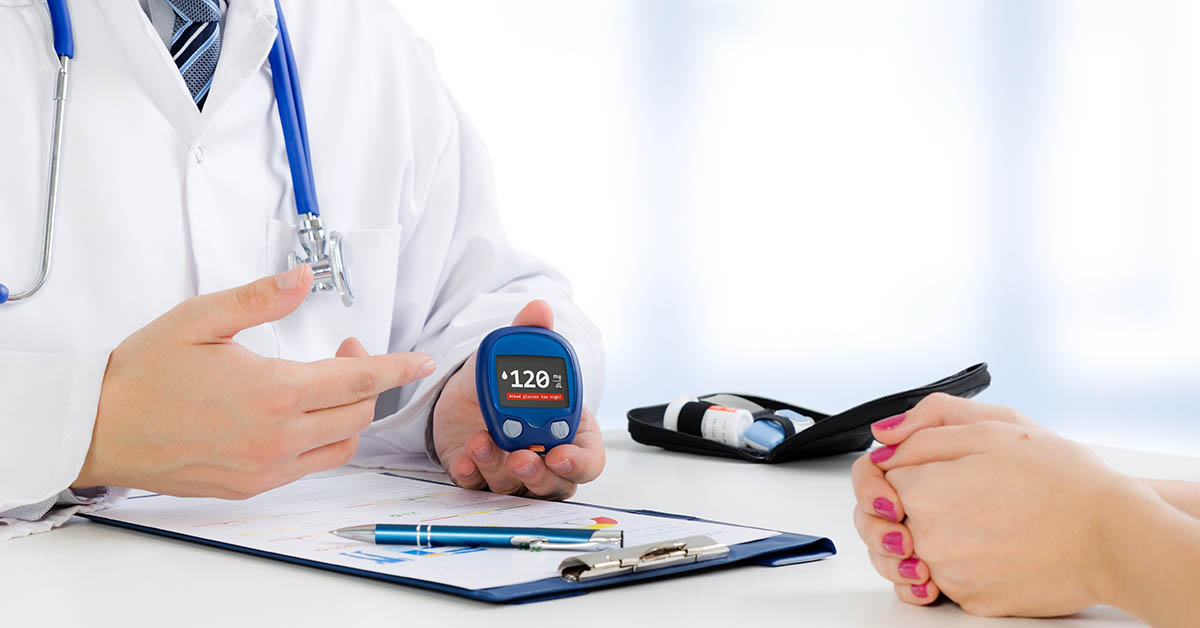
Diabetes mellitus is a serious metabolic health condition characterized by the impaired ability to regulate blood sugar levels due to resistance to or lack of insulin. Pancreas is the internal organ responsible for secreting insulin vital to breaking down carbohydrates and sugar into the bloodstream—which in turn serves as our energy to use in daily activities.
Once our pancreas can no longer produce insulin or develops resistance to insulin, it could lead to uncontrolled elevated blood glucose levels. Kapag mataas ang blood sugar level, naaapektuhan nito ang natural na pag convert ng ating katawan from food into energy.
Sa pagtatala ng International Diabetes Federation (IDF), 537 million of adults around the world are living today with diabetes. The global projections for 2030 show 578 million while 700 million are projected for 2040. According to a study published in the Journal of ASEAN Federation Societies by Angelique Bea Uy and Cecilia Jimeno, obesity, smoking, alcohol intake, caloric intake, and carbohydrate intake can be factors in the prevalence of diabetes among Filipino young adults. Ayon pa sa Philippine Statistics Authority, pang-apat sa sanhi ng pagkamatay sa Pilipinas ang diabetes last 2020 with 37,265 deaths. Nag-peak ito at the high time of the COVID pandemic, too.
Philippine Society of Endocrinology, Diabetes, and Metabolism president Dr. Michael Villa said that 4 million Filipino adults are diagnosed with diabetes mellitus and common comorbidities and complications with type 2 diabetes, including heart diseases. Sa kanilang pagtatala, higit 32% ng may type 2 diabetes ay may cardiovascular complications habang higit 87% naman ay overweight o obese. Dagdag pa niya, “a very silent and persistent problem” ang diabetes.

There are three main types of diabetes:
Type 1 diabetes requires insulin treatment for survival and can develop at any age. Dito, insulin-dependent ang patients. Usually, mga nasa younger age bracket (children, teens, and young adults) ang nagkakaroon nito—juvenile or childhood-onset kung tawagin. According to the US Center for Disease Control and Prevention (CDC), it might be caused by an auto-immune reaction where “the body attacks itself by mistake.” At dahil mabilis ang pag develop nito, kinakailangan mag-inject ng insulin daily.
On the other hand, Type 2 diabetes which is the more common type of diabetes results from the body’s ineffective use of insulin. Hindi nagagamit nang tama ng ating katawan ang naproduce na insulin. Maaaring sanhi ito ng labis na timbang at physical inactivity o yung mga gawain na hindi nagtutulak sa atin kumilos at gumalaw. Type 2 diabetes may need insulin later but not immediately. Oral antidiabetic medicines will suffice at first. Non-insulin dependent or adult-onset naman ang mga mayroon nito. CDC explained that this type develops over many years and is typically diagnosed in adults. Despite this, parami nang parami ang mga young adults na kinakikitaan nito. It’s important to note that type 2 diabetes can be prevented or delayed through lifestyle changes such as losing weight, maintaining a healthy diet, and being physically active.
Ang hyperglycemia or high blood glucose level ay isang characteristic ng gestational diabetes. According to the CDC, this type develops in pregnant women with no history of diabetes and can be diagnosed through prenatal screening. Additionally, the World Health Organization stated that “women with gestational diabetes are at an increased risk of complications during pregnancy and at delivery.” Gayundin, ang kanilang mga anak or children of diabetics ay may mataas na posibilidad magkaroon ng type 2 diabetes sa hinaharap.
Maaari tayong mag take ng HBA1c test to check our blood sugar level over the past three months (90 days). Ginagawa rin ang simple test na ito to help diagnose prediabetes and diabetes. Gayundin as a routine to regularly check a patient’s blood sugar level.
What are the symptoms or signs of diabetes to look out for?
According to Department of Health (DOH), ang mga sumusunod ay ilan sa mga signs or symptoms of diabetes:
- Madalas o labis na pag-ihi
- Labis na pagkauhaw
- Hindi maipaliwanag na pagkabawas ng timbang
- Pagkakaroon ng random blood sugar level na mas mataas kaysa 200 mg/dl
- Pagkakaroon ng fasting plasma glucose level na higit pa sa 126 mg/dl
Mayroon rin tayong tinatawag na diabetic foot wherein there are signs and symptoms to consider such as pagbabago ng kulay ng balat sa paa, pagbabago ng skin temperature, pamamaga o swelling in the foot or ankle, kirot or pain in the legs, open sores that are slow to heal, and unusual foot odor to name a few.

Ano ba ang mga maaaring gawin para maiwasan ang diabetes?
According to WHO, there are ways to avoid diabetes:
- Eat healthy. Kumain ng mga masustansyang pagkain tulad ng lean meat (chicken breast, fish meat, turkey breast, beef flank or eye of round steak), fruits and leafy greens, protein and fiber-rich foods, whole grains, nuts, herbs and spices
- Exercise for at least 30 mins per day and be physically active, para maiwasan ang sedentary lifestyle
- Bantayan ang timbang regularly to avoid excessive weight gain
- Regular na i-check ang blood sugar levels lalo na if in doubt
- Itigil ang paninigarilyo
- Sundin ang medical advice ng mga doktor at eksperto
For most adults, an ideal Body Mass Index or BMI is in the 18.5 to 24.9 range. However, BMI does not measure body fat directly, and it may not be accurate for people with a muscular build, older people, and pregnant women.
Early diagnosis can be done through relatively affordable testing of blood glucose. Ang fasting blood sugar or FBS level ay 99 mg/dL or lower; while prediabetes ang 100 mg/dL to 125 mg/dL; at diabetes naman kung 126 mg/dL or higher.
May mga gamot ba na maaaring inumin para sa sakit na diabetes? Mayroon tayong mga available medications for treatment.
Insulin injections are needed by people with type 1 diabetes. Para naman sa mga may type 2 diabetes, medications such as insulin, metformin, gliclazide, glimepiride, glipizide, sitagliptin, and sodium-glucose co-transporters type 2 (SGLT-2) inhibitors help manage our blood sugar levels. Nandito ang MedChoice for you, Todo Aruga sa Thyroid at Diabetes!
Disclaimer: This article serves as an informative platform only and does not serve as an alternative for medical expertise. Seek professional help through your medical doctors.
References:
All about adult BMI. (2022, June 3). Centers for Disease Control and Prevention. https://www.cdc.gov/healthyweight/assessing/bmi/adult_bmi/index.html
Baclig, C. E. (2021, July 21). Diabetes: A bitter health crisis for Filipinos | Inquirer News. INQUIRER.net. https://newsinfo.inquirer.net/1461980/diabetes-a-bitter-health-crisis-for-filipinos
Cudis, C. (2021). Diabetes among top killers in the Philippines. Philippine News Agency. Retrieved August 7, 2023, from https://www.pna.gov.ph/articles/1139440
Diabetes: All About Your A1c. (2022, September 30). Centers for Disease Control and Prevention. Retrieved October 7, 2023, from https://www.cdc.gov/diabetes/managing/managing-blood-sugar/a1c.html
How will you know if you are a diabetic? (n.d.). Department of Health. Retrieved August 7, 2023, from https://doh.gov.ph/faqs/How-will-you-know-if-you-are-a-diabetic
International Diabetes Federation. (2023, October 3). What is diabetes | International Federation of Diabetes. https://idf.org/about-diabetes/what-is-diabetes/
Modglin, L. (2023, September 21). Normal Blood Sugar Levels By Age (Chart). Forbes Health. https://www.forbes.com/health/body/normal-blood-sugar-levels/
Patient Guide to Diabetes. (2022, August 16). Exercise and Diabetes – The Johns Hopkins Patient Guide to Diabetes. The Johns Hopkins Patient Guide to Diabetes. https://hopkinsdiabetesinfo.org/exercise-and-diabetes/
Statista. (2023, February 20). Deaths by diabetes mellitus diseases Philippines 2017-2022. https://www.statista.com/statistics/1367306/philippines-deaths-from-diabetes/
Utiger, R. D. (2023, August 18). Pancreas | Endocrine & exocrine functions. Encyclopedia Britannica. https://www.britannica.com/science/pancreas
Uy, A. B., & Jimeno, C. (2021). Cardiometabolic Risk Factors leading to Diabetes Mellitus among the Young (YOD) from the 8th Philippine National Nutrition Survey. Journal of the ASEAN Federation of Endocrine Societies, 36(1), 12–24. https://doi.org/10.15605/jafes.036.01.02
Watts, M. (2023). Which foods help diabetes? Diabetes. https://www.diabetes.co.uk/food/which-foods-help-diabetes.html
World Health Organization: WHO & World Health Organization: WHO. (2023). Diabetes. www.who.int. https://www.who.int/news-room/fact-sheets/detail/diabetes
